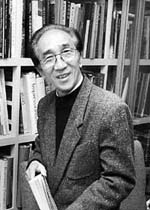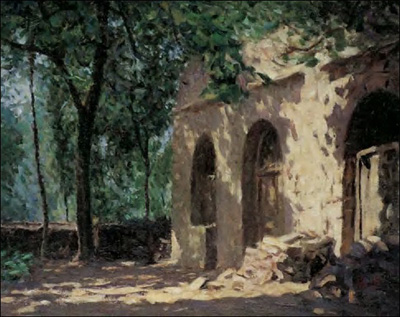
Oil painting has been popular in China for one century. With
endeavors of several generations of Chinese artists, oil painting
has enjoyed an important position in modern Chinese art. Last
April, an oil painting review exhibition by Jin Shangyi, who had
worked as president of Central Academy of Fine Arts, was held in
National Art Museum of China. The total of 160 exhibits show Jin's
lifelong pursuit of oil art.
Jin entered Peking State Art College at the age of 15 in 1949.
The college was renamed Central Academy of Fine Arts in 1950 and he
received professional training and guidance by several painting
masters. In 1955, Jin went to former Soviet Union to continue his
study of oil painting and graduated with excellent performance. As
new China's first generation of oil painters, Jin is known for his
works of revolutionary and history subjects. His masterpieces such
as "Ascending Peak Mushitago", "Seeing Off", "Our Friends are All
Over the World", "The December Meeting" and "The Long March"
demonstrate his artistic talents and ambition to reflect realities
with painting.
 |
Jin's artistic accomplishments are reflected by his vast number
of portraits. "I use portrait as a means to represent my ideal and
pursuit of realistic life," explained Jin. Over his decades of
artistic career, Jin has depicted a series of representative
figures in Chinese realities. The images of ordinary workers he has
created are so vivid that they can echo visitors' feelings. He had
tried to purify people's minds by depicting ideal life.
Jin creates, but not depicts figures in his portrait works,
which shows a different artistic pursuit from his peers. While most
Chinese oil painters followed the styles of former Soviet Union, he
blazed a new road by interpreting essential natures of European oil
painting from the perspective of design language. Meanwhile, he
consciously explored spiritual value of his portraits from classic
experiences. Such understanding surpassed the limit of the time and
helped him to create extraordinary works.
Since China reopened its door to the world in the late 1970s,
Jin has visited numerous museums in Europe and North America and
studied origin and development of European oil painting,
particularly classic oil works since the Renaissance. He learned
the technical nature of Western bright-and-dark design system as
well as cultural essence of Western oil art. As a result, he
rebuilt his artistic goals both in form and in spiritual value.
Jin has made remarkable contribution to depicting of Chinese
figures by oil and is considered as a landmark of Chinese oil
painting in the new era. Neoclassicism represented by his oil style
has had extensive impact on Chinese fine arts circle as well as the
whole society.
The subject of humanity represents Jin's artistic style.
Reserved facial expressions, elegant tones and serene images
corresponded to cultural psychology and social ideal for humanity
and beauty in the early 1980s. When realism was marginalized in
Chinese painting circle, Jin did not simply safeguard it but revamp
its value by exploring humanity.
In the 21st century, Jin's paintings have shown a new change,
featuring lively lines and bright colors. This change reflects his
consistent pursuit of depicting realistic life.
Jin is closely linked to the development of Chinese fine arts in
the past half century. Fifty years of diligent exploration and
pursuit has made him an art practitioner and academic guide in
Chinese oil circle. Jin is now in his seventies and continues to
make new creations. The exhibition in 2005 was not a review of his
past accomplishments but also a herald of his future success.
(ChinaCulture.org August 11, 2006)
|

